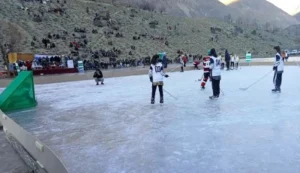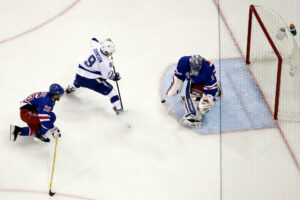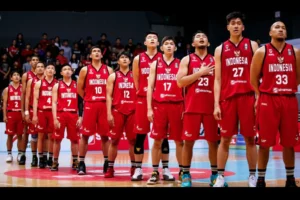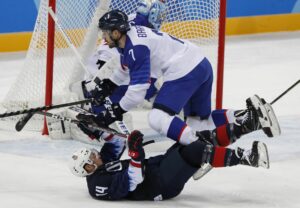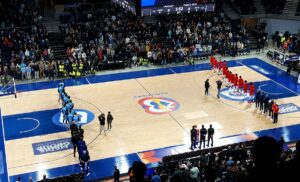Normal ice-Hockey Injuries Treated by Physiotherapy
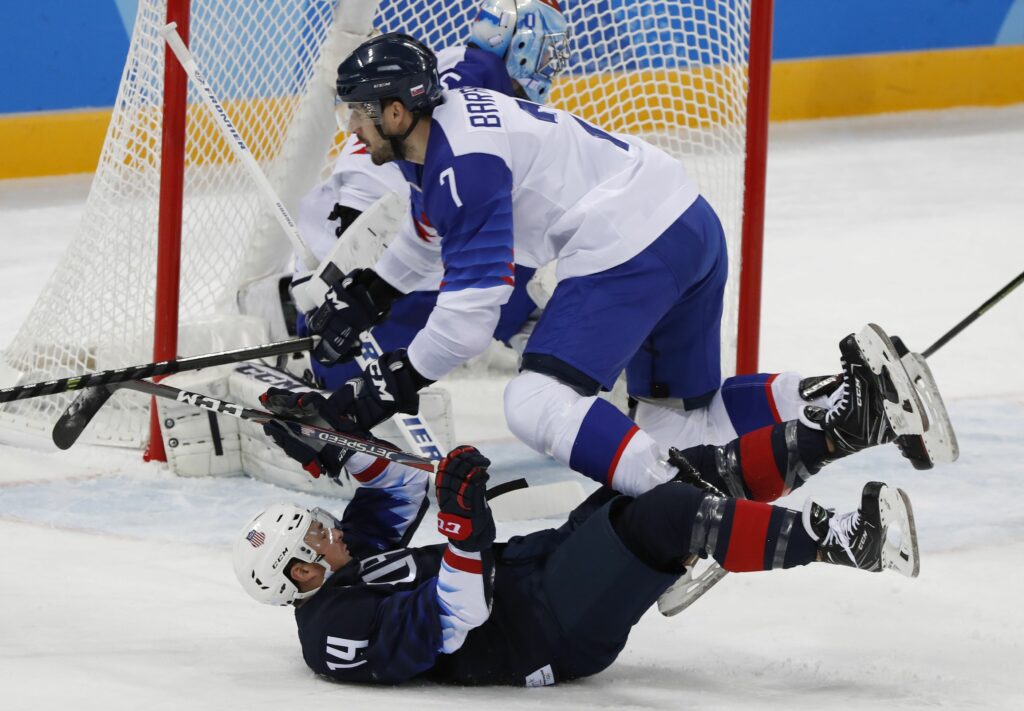
Ice Hockey – Pyeongchang 2018 Winter Olympics – Men Preliminary Round Match - U.S. v Slovakia - Gangneung Hockey Centre, Gangneung, South Korea – February 16, 2018 - Broc Little of the U.S. falls on the ice in action with Ivan Baranka of Slovakia REUTERS/Grigory Dukor
Sadly, injuries are many times the price hockey players pay while contending in their picked sport. A throbbing painfulness are a piece of life regardless on the off chance that you’re a sporting player or a world class NHL star. There are a few injuries which are viewed as normal to hockey players, however on the brilliant side, the vast majority of these can be treated by physiotherapy. Pretty much all pieces of the body are helpless to injury no matter what how much pre-game readiness and defensive hardware worn. Hockey players will find the most widely recognized region of the body impacted by injuries are the knees, shoulders, arms, hips, legs, and head. We’ll investigate these normal injuries beneath and the most effective way to manage them.
Knees Injuries
Most knee injuries endured are injuries or tears to the capsular or potentially average insurance tendons (MCL). Tears to the foremost cruciate tendon (leg tendon) are uncommon in hockey as they ordinarily happen more in turf sports like soccer, rugby, and football. These normal hockey injuries can be treated by our group of expert specialists at Fit Physiotherapy. For example, a hyper-extended MCL might benefit from outside input along by utilizing a functioning scope of movement strategy which will empower you to expand and flex the joint completely. The muscles and delicate tissue that encompasses the tendons are assembled and the agony can be feeling significantly better by means of ultrasound and transcutaneous electrical nerve excitement (TENS) treatment.
Profound contact back rub can likewise be used to assist with accelerating the recuperating system. Contingent upon the seriousness of the injury, a dynamic activity program can be followed to assist a player with recapturing the strength in the impacted joint. In certain occasions, knee supports might be worn while getting back to the ice or the knee could be taped to assist with forestalling further harm.
Shoulders and Arm Injuries
One of the most widely recognized chest area injuries for hockey players is an isolated shoulder. The Acromioclavicular (AC) joint can be isolated in the event that a player tumbles to the ice on their shoulder or is registered vigorously with the sheets. As well as being isolated, a shoulder can likewise be disjoined. Players may likewise experience the ill effects of broken hands or wrists on the off chance that they’re cut by their rivals’ sticks and the ulnar tendon can be torn which prompts a condition known as gamekeeper’s thumb.
The Air conditioner joint can be treated through delicate tissue assembly of the rotator sleeve, trapezius, and pectorals. Once more, out group at Fit Physiotherapy will accelerate the recuperating and control the aggravation with ultrasound and TENS treatment alongside extending, dynamic scope of movement and explicit reinforcing works out. At times the player might be encouraged to wear a lash or support while getting back to activity.
With regards to thumb and wrist injuries, for example, strains and injuries, the extensors and lower arm flexors will go through delicate tissue activation. Ultrasound and TENS treatment will ease the aggravation and speed the mending system while detached scope of movement, dynamic scope of movement, and fortifying and extending activities will be performed. Explicit wrist and thumb supports are likewise accessible for players who require them.
Hip Injuries
Torment in the hips can dial hockey players back or sideline them when there has been unusual contact nearby between the joint’s ball and attachment. Players can likewise experience the ill effects of injuries and muscle ligament strains around the hips. Our advisors will actually want to decide precisely where and why you’re feeling agony and will utilize the legitimate procedures important to assist with accelerating your recuperation. This might incorporate reinforcing practices for your center and hips as well as dynamic and detached scope of movement and delicate tissue preparation.
Head Injuries
At Fit Physiotherapy we are likewise knowledgeable about treating and restoring players who have endured head injuries like blackouts. This kind of normal injury happens when a player’s cerebrum is shaken within the skull following a powerful effect or impact. It very well may be the consequence of a body check or a tumble to the ice. A blackout can be the consequence of an immediate hit to the neck, face or head as well as a structure a whiplash injury. By and large, most of blackouts progressively recuperate themselves over a time of around seven to 10 days. Nonetheless, in additional extreme cases, the impacts might in any case be felt a little while later. In the event that you’re actually feeling the side effects of a blackout following three weeks you could be experiencing post-blackout condition (laptops). This implies you might be managing weariness, dazedness, cerebral pains, a sleeping disorder, cognitive decline, as well as crabbiness.
Our group of specialists is prepared in overseeing blackout side effects and can assess the reason for the issue and assist with treating it. Since all head injuries and their side effects are special we will completely assess your condition and make a customized plan for your treatment. Numerous medicines center around the vestibular framework which incorporates your inward ears and their associations with the mind. Assuming you’re feeling agony, snugness, or touchiness in the neck these issues can be reduced by means of the administration and reinforcing of the appropriate delicate tissues. Prior to getting back to the ice, players will likewise have their pulses observed to be certain they’re good to go.
On the off chance that you’re experiencing any sort of hockey injury, kindly go ahead and contact Fit Physiotherapy for a total assessment of your condition and treatment program which will have you back on the ice at the earliest opportunity.

